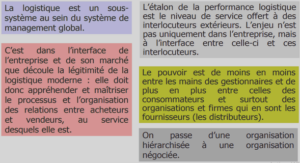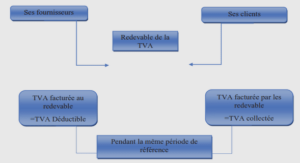In this thesis we are essentially interested in the mathematical modeling of wave propagation phenomena by using Green’s functions and integral equation techniques. As some poet from the ancient Roman Empire inspired by the Muses might have said (Hein 2006):
Non fluctus numerare licet iam machinatori, Invenienda est nam functio Viridii.
This Latin epigram can be translated more or less as “to count the waves is no longer permitted for the engineer, since to be found has the function of Green”. An epigram is a short, pungent, and often satirical poem, which was very popular among the ancient Greeks and Romans. It consists commonly of one elegiac couplet, i.e., a hexameter followed by a pentameter. Two possible questions that arise from our epigram are: “why does someone want to count waves?”, and even more: “what is a function of Green and for what purpose do we want to find it?” Let us hence begin with the first question.
Since the dawn of mankind have waves, specifically water waves, been a source of wonder and admiration, but also of fear and respect. Giant sea waves caused by storms have drowned thousands of ships and adventurous sailors, who blamed for their fate the wrath of the mighty gods of antiquity. On more quite days, though, it was always a delightful pleasure to watch from afar the sea waves braking against the coast. For the ancient Romans, in fact, the expression of counting sea waves (fluctus numerare) was used in the sense of having leisure time (otium), as opposed to working and doing business (negotium). Therefore the message is clear: the leisure time is over and the engineer has work to be done. In fact, even if it is not specifically mentioned, it is implicitly understood that this premise applies as much to the civil engineer (machinator) as to the military engineer (munitor). A straight interpretation of the hexameter is also perfectly allowed. To count the waves individually as they pass by before our eyes is usually not the best way to try to comprehend and reproduce the behavior of wave propagation phenomena, so as to be afterwards used for our convenience. Hence, to understand and treat waves, what sometimes can be quite difficult, we need powerful theoretical tools and efficient mathematical methods.
This takes us now to our second question, which is closely related to the first one. A function of Green (functio Viridii), usually referred to as a “Green’s function”, has no direct relationship with the green color as may be wrongly inferred from a straight translation that disregards the little word play lying behind. The word for Green (Viridii) is in the genitive singular case, i.e., it stands not for the adjective green (viridis), but rather as a (quite rare) singular of the plural neuter noun of the second declension for green things (viridia), which usually refers to green plants, herbs, and trees. Its literal translation, when we consider it as a proper noun, is then “of the Green” or “of Green”, which in English is equivalent to “Green’s”. A Green’s function is, in fact, a mathematical tool that allows us to solve wave propagation problems, as I hope should become clear throughout this thesis. The first person who used this kind of functions, and after whom they are named, was the British mathematician and physicist George Green (1793–1841), hence the word play with the color of the same name. They were introduced by Green (1828) in his research on potential theory, where he considered a particular case of them. A Green’s function helps us also to solve other kinds of physical problems, but is particularly useful when dealing with infinite exterior domains, since it achieves to synthesize the physical properties of the underlying system. It is therefore in our best interest to find (invenienda est) such a Green’s function.
Waves, as summarized in the insightful review by Keller (1979), are disturbances that propagate through space and time, usually by transference of energy. Propagation is the process of travel or movement from one place to another. Thus wave propagation is another name for the movement of a physical disturbance, often in an oscillatory manner. The example which has been recognized longest is that of the motion of waves on the surface of water. Another is sound, which was known to be a wave motion at least by the time of the magnificent English physicist, mathematician, astronomer, natural philosopher, alchemist, and theologian Sir Isaac Newton (1643 1727). In 1690 the Dutch mathematician, astronomer, and physicist Christiaan Huygens (1629–1695) proposed that light is also a wave motion. Gradually other types of waves were recognized. By the end of the nineteenth century elastic waves of various kinds were known, electromagnetic waves had been produced, etc. In the twentieth century matter waves governed by quantum mechanics were discovered, and an active search is still underway for gravitational waves. A discussion on the origin and development of the modern concept of wave is given by Manacorda (1991).
The laws of physics provide systems of one or more partial differential equations governing each type of wave. Any particular case of wave propagation is governed by the appropriate equations, together with certain auxiliary conditions. These may include initial conditions, boundary conditions, radiation conditions, asymptotic decaying conditions, regularity conditions, etc. The differential equations together with the auxiliary conditions constitute a mathematical problem for the determination of the wave motion. These problems are the subject matter of the mathematical theory of wave propagation. Some references on this subject that we can mention are Courant & Hilbert (1966), Elmore & Heald (1969), Felsen & Marcuwitz (2003), and Morse & Feshbach (1953).
Maxwell’s equations of electromagnetic theory and Schrodinger’s equation in quantum ¨ mechanics are both usually linear. They are named after the Scottish mathematician and theoretical physicist James Clerk Maxwell (1831–1879) and the Austrian physicist Erwin Rudolf Josef Alexander Schrodinger (1887–1961). Furthermore, the equations governing ¨ most waves can be linearized to describe small amplitude waves. Examples of these linearized equations are the scalar wave equation of acoustics and its time-harmonic version, the Helmholtz equation, which receives its name from the German physician and physicist Hermann Ludwig Ferdinand von Helmholtz (1821–1894). Another example is the Laplace equation in hydrodynamics, in which case it is the boundary condition which is linearized and not the equation itself. This equation is named after the French mathematician and astronomer Pierre Simon, marquis de Laplace (1749–1827). Such linear equations with linear auxiliary conditions are the subject of the theory of linear wave propagation. It is this theory which we shall consider.
The classical researchers were concerned with obtaining exact and explicit expressions for the solutions of wave propagation problems. Because the problems were linear, they constructed these expressions by superposition, i.e., by linear combination, of particular solutions. The particular solutions had to be simple enough to be found explicitly and the problem had to be special enough for the coefficients in the linear combination to be found.
One of the devised methods is the image method (cf., e.g., Morse & Feshbach 1953), in which the particular solution is that due to a point source in the whole space. The domains to which the method applies must be bounded by one or several planes on which the field or its normal derivative vanishes. In some cases it is possible to obtain the solution due to a point source in such a domain by superposing the whole space solution due to the source and the whole space solutions due to the images of the source in the bounding planes. Unfortunately the scope of this method is very limited, but when it works it yields a great deal of insight into the solution and a simple expression for it. The image method also applies to the impedance boundary condition, in which a linear combination of the wave function and its normal derivative vanishes on a bounding plane. Then the image of a point source is a point source plus a line of sources with exponentially increasing or decreasing strengths. The line extends from the image point to infinity in a direction normal to the plane. These results can be also extended for impedance boundary conditions with an oblique derivative instead of a normal derivative (cf. Gilbarg & Trudinger 1983, Keller 1981), in which case the line of images is parallel to the direction of differentiation.
I. INTRODUCTION |






